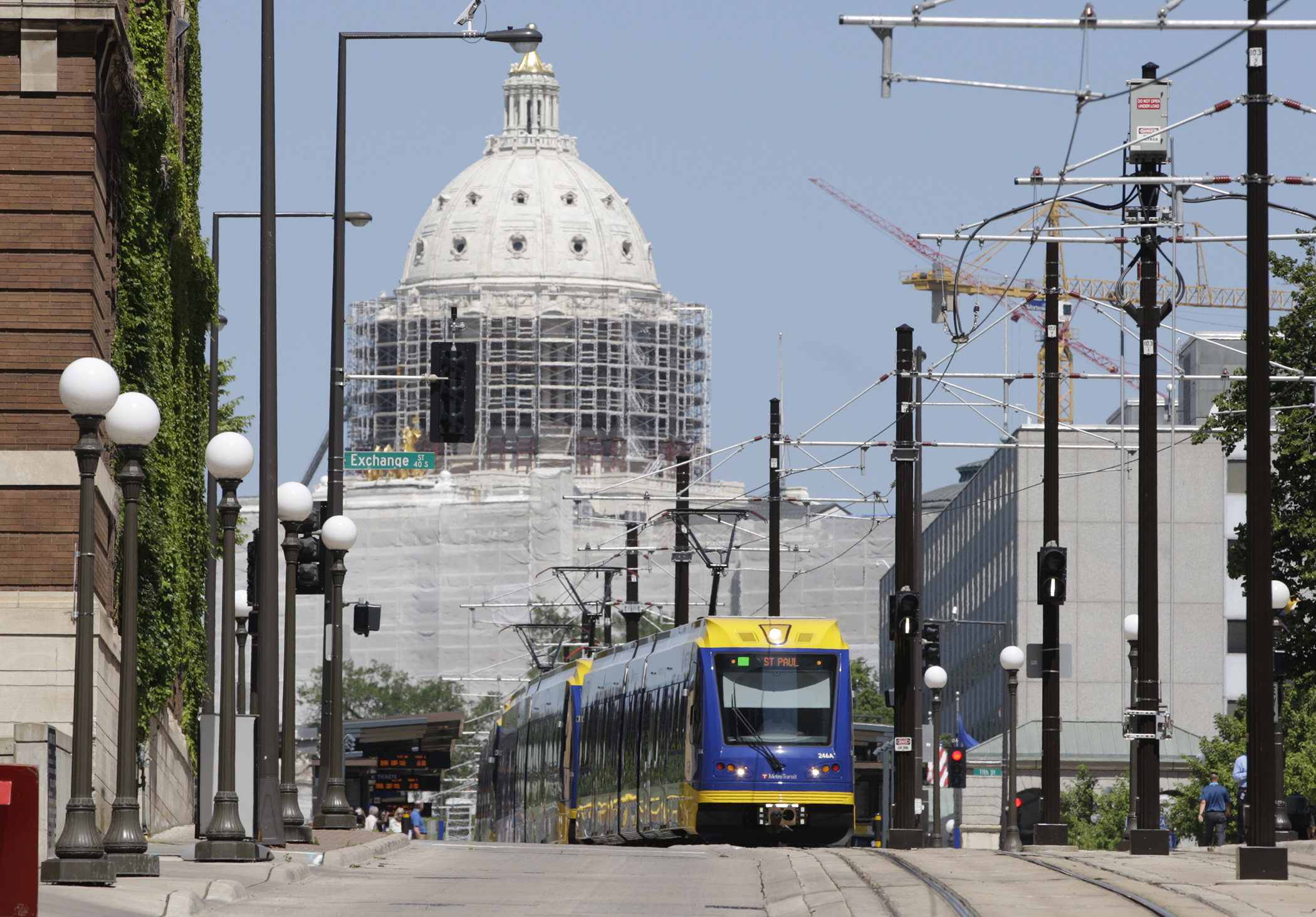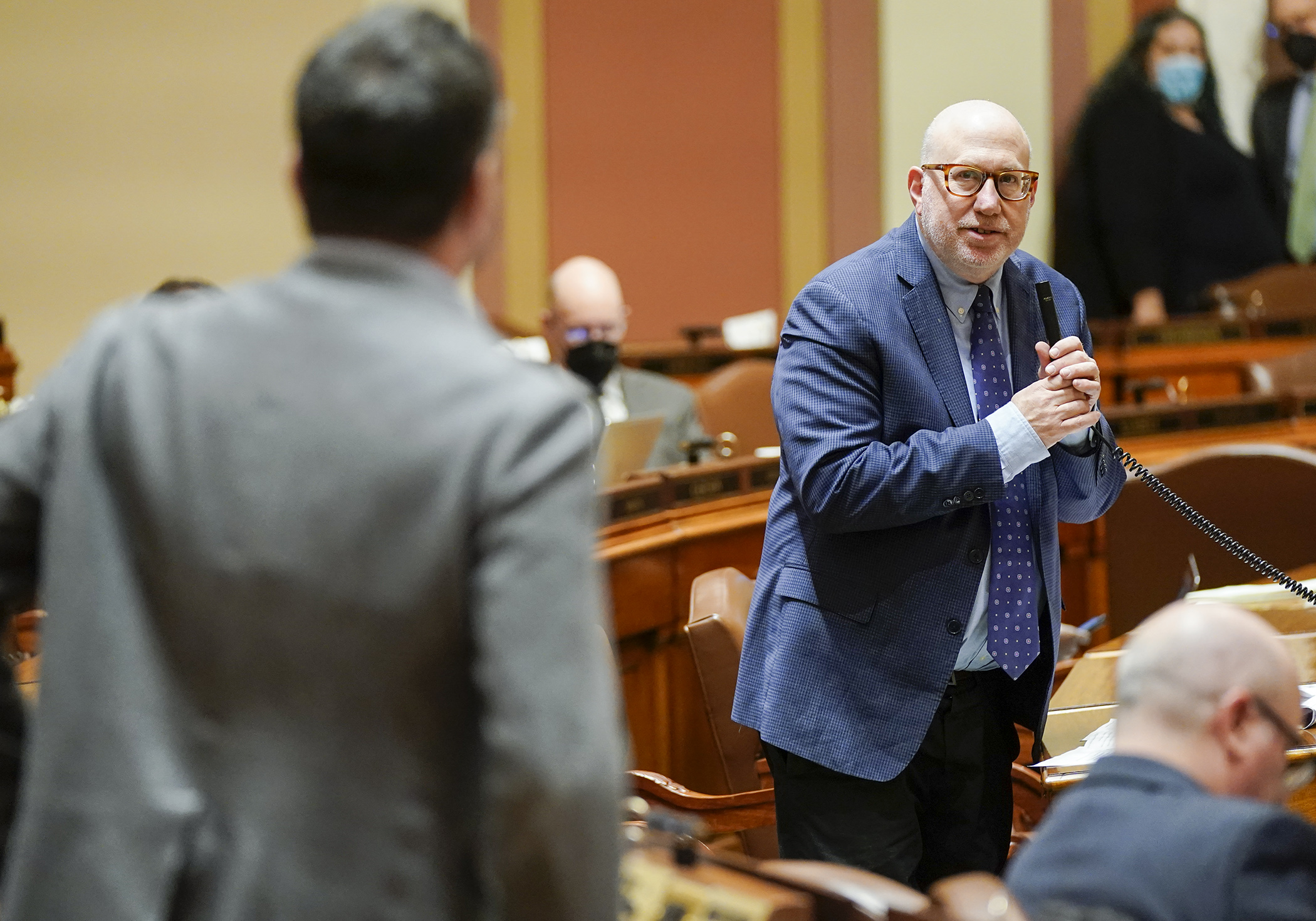House passes bill requiring audit of Southwest LRT project overruns, delays

Reasons for cost overruns and delays in the Southwest Light Rail Transit project would be examined by the Office of the Legislative Auditor under a bill passed 129-1 by the House Thursday.
Sponsored by Rep. Frank Hornstein (DFL-Mpls), HF3035, as amended, now goes to the Senate where Sen. D. Scott Dibble (DFL-Mpls) is the sponsor.
The passenger rail line, spanning 14.5 miles between downtown Minneapolis and Eden Prairie was expected to open in 2023 and cost about $2 billion to build. But the opening has been pushed back until 2027 and is hundreds of millions over budget. The project is being managed by the Metropolitan Council.
 Rep. Frank Hornstein, right, responds to a question during the March 3 floor debate on HF3035, a bill that would direct the legislative auditor to conduct a review of the Southwest LRT project. (Photo by Paul Battaglia)
Rep. Frank Hornstein, right, responds to a question during the March 3 floor debate on HF3035, a bill that would direct the legislative auditor to conduct a review of the Southwest LRT project. (Photo by Paul Battaglia)Understanding the reasons for the cost overruns and delays is an urgent and important matter, Hornstein said. What the Legislature is doing is unusual because the circumstances are unusual, he said.
[WATCH House floor debate on the bill]
He said he expects actionable items to come from the audit.
Under the bill, the legislative auditor would examine the main reasons for the cost overruns and delays, and whether the Metropolitan Council properly scrutinized the route and design, cost estimates, management and hiring practices, and change orders.
The legislative auditor would also be directed offer recommendations on how the Metropolitan Council and Hennepin County can avoid additional cost overruns and delays, review a January 2022 settlement between the Metropolitan Council and a contractor, and conduct a cost benefit analysis.
The bill would appropriate $200,000 for the review, as the auditor’s office will likely need outside expertise.
Amendments adopted during Thursday’s debate, would require the Metropolitan Council to give the Legislature status reports on the project Jan. 1 and July 1 of each year, and the Legislature would need to be informed immediately if cost estimates increase by more than 5% or are delayed by more than six months.
House Minority Leader Kurt Daudt (R-Crown) unsuccessfully offered an amendment that would kill the rail project completely, calling it a waste of money.
“This is 1800s technology to solve a modern problem,” he said, adding the internet is the modern solution.
Related Articles
Search Session Daily
Advanced Search OptionsPriority Dailies
Speaker Emerita Melissa Hortman, husband killed in attack
By HPIS Staff House Speaker Emerita Melissa Hortman (DFL-Brooklyn Park) and her husband, Mark, were fatally shot in their home early Saturday morning.
Gov. Tim Walz announced the news dur...
House Speaker Emerita Melissa Hortman (DFL-Brooklyn Park) and her husband, Mark, were fatally shot in their home early Saturday morning.
Gov. Tim Walz announced the news dur...
Lawmakers deliver budget bills to governor's desk in one-day special session
By Mike Cook About that talk of needing all 21 hours left in a legislative day to complete a special session?
House members were more than up to the challenge Monday. Beginning at 10 a.m...
About that talk of needing all 21 hours left in a legislative day to complete a special session?
House members were more than up to the challenge Monday. Beginning at 10 a.m...